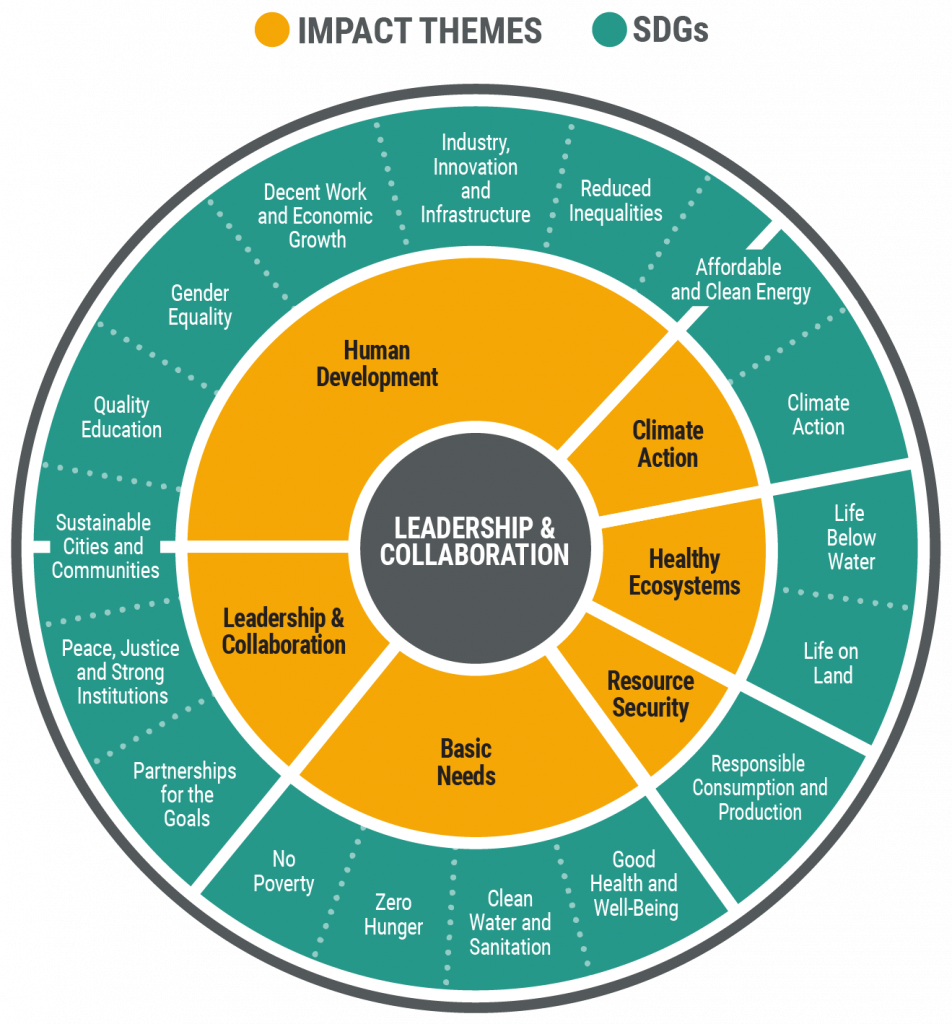Last August, we launched our new Impact Metrics product to support investors’ growing need for more robust data that can be used to demonstrate how ESG-focused strategies can deliver real-world social and environmental outcomes. Since the launch, I have connected with many enthusiastic institutional investors eager to make sense of the rapidly evolving world of impact, excited to dive into impact data, and cautiously optimistic about supporting their clients’ Sustainable Development Goal (SDG) and impact needs.
Whether you’re just starting your impact journey or are already working with impact data, below, I address the most commonly asked questions about Sustainalytics’ approach to impact.

1. What does impact mean for Sustainalytics?
A business offers goods and services that have tangible economic benefits for consumers, governments and other businesses. In addition to these economic benefits, business activities can also cause social and environmental externalities. These externalities, which may be positive or negative, we refer to as impacts. In short, impact refers to any direct or indirect social or environment outcome resulting from business activities.
Our ESG Impact Framework is the lens through which we evaluate companies’ environment and social impacts. At its broadest level, our framework includes three environmental and two social impact themes. We also have a baseline theme, Leadership and Collaboration, which captures activities that indirectly impact one of the other themes. We believe these themes are exhaustive, encompassing all potential environmental and social impacts attributed to an entity’s activities.
As a widely recognized and globally accepted set of objectives for a sustainable future, the SDGs are also embedded in our ESG Impact Framework. All topics covered across the SDGs fall under one or more of our social and environmental impact themes.
2. What is the difference between ESG risk and ESG impact, and why should investors think about both risk and impact?
Risk and impact do not represent an either/or proposition; instead, they represent different lenses through which you can engage with ESG data and insights.
ESG impact differs from ESG risk in that it does not focus on financial materiality–the degree to which ESG issues may affect the enterprise value of a firm. ESG impact is focused on the positive and/or negative effects of a company on the environment and society.
The importance of this distinction was emphasized in a recent joint statement published by CDP, CDSB, GRI, IIRC and SASB. These standard-setting organizations highlighted the difference between sustainability information concerned with an organization’s significant impacts on the environment and society versus sustainability information that is financially material to the company (relevant to its enterprise value creation).
In recent years, the use of ESG information as a risk signal has driven the mainstreaming of ESG data. Nevertheless, many investors also engage with ESG information to determine whether, how and to what degree they can use their capital to drive more sustainable outcomes – to have a positive impact. Most commonly, this is done by focusing on a set of impact themes (e.g. diversity, water) or selecting specific SDGs (e.g. no poverty, life below water). If you are thinking about how your investments align with a sustainable future, how your investments contribute to the SDGs, or how your investment decisions support or hinder a sustainable future, you are ultimately concerned with the social and environmental impact of your investments.
3. What market trends are driving the growing need for impact data?
There are several factors driving a renewed focus on impact and interest in impact data:
- Retail investor interest: Several studies have found that the next generation of investors (e.g. millennials) want to achieve positive social and environmental outcomes, alongside financial return, with their investments. Case in point, a 2019 study published by the University of Cambridge’s Institute for Sustainable Leadership found that individuals, especially younger generations, are inclined to forgo some returns (up to 2.5%) to invest in a sustainable fund.
- Evolving regulatory environment: The EU Sustainable Finance Action Plan focuses on reorienting capital toward investments that achieve sustainable and inclusive growth. At the center of this plan is the EU Taxonomy, an impact-focused framework that is designed to determine whether a business activity is "sustainable." Determinations are based on whether an activity positively contributes to at least one of the taxonomy’s six environmental objectives without negatively impacting the others.
- Justifying the investment in ESG: There is a renewed focus on demonstrating how efforts to use ESG information and integrate ESG into investment processes produce real-world outcomes that align with a more sustainable future. For example, the UNPRI’s is focused on guiding investors on how to shape real-world outcomes aligned with the SDGs.
4. What data and insight does Sustainalytics’ offer to address investors’ impact needs?
Our Impact Metrics product contains a broad set of company-level metrics, which are mapped to impact themes and the SDGs. We have over 40 metrics, including 25 product and service metrics and 18 operational metrics. Our metrics provide a useful measure or proxy for measuring impact on at least one of our impact themes and at least one of the SDGs. We cover up to 12,000 companies on each impact metric and provide both company-reported data and, where feasible, estimated data.
5. How can investors use Impact Metrics?
This product enables investors to fulfill their unique ESG impact needs, especially as it relates to reporting and product creation:
Reporting:
- Measure, monitor and report on company-specific impacts on SDGs or specific impact themes
- Measure, monitor and report on portfolio or fund level impacts
- Evaluate third-party funds and mandates on impact or SDG outcomes
Security Selection and Product Creation
- Build impact theme or SDG specific investment solutions
- Use as an input into proprietary impact, ESG or sustainability assessment frameworks
Whether you are interested in learning more about our Impact Metrics product or would like to discuss impact broadly, reach out to your preferred client service contact or check-out our Impact Metrics webpage.




